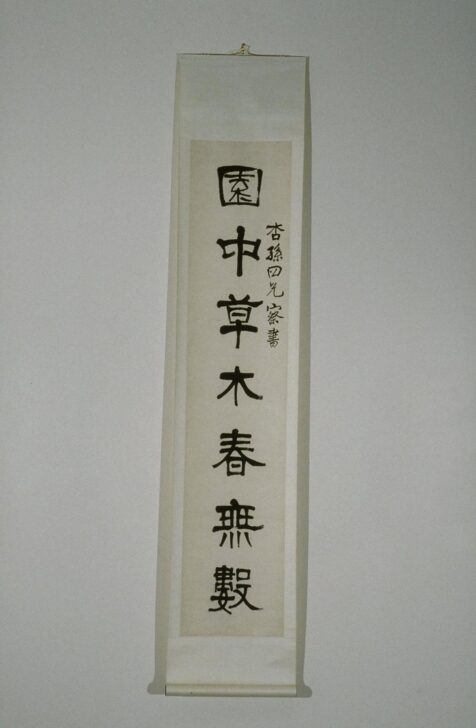Calligraphy (couplet)
Mo Youzhi

Description
Gallery Rotation Winter 2014
Mo Youzhi
China, circa 1811–1871
Calligraphy (couplet)
Qing dynasty (1644–1912)
19th century
Hanging scroll, ink on paper
Gift of Sarah and Otto Graf, supplemented by the Margaret Watson Parker Art Collection Fund, 1980/2.205–6
Born into a literary family, Mo Youzhi was an important scholar of epigraphy (inscriptions) in addition to being a famous calligrapher celebrated for his seal script—a stylized and blocky type of writing based on symbols cast into bronze ritual vessels from the Shang (1600–1046 BCE) and Zhou (1045–246 BCE) dynasties. This couplet is written in clerical script, an archaic style of Chinese calligraphy originating in the Qin dynasty (221–206 BCE) that became the dominant style of writing in the Han dynasty (206 BCE–220 CE). Like seal script, clerical script is highly legible, but it is more calligraphic, with a pronounced, wavelike flaring of isolated major strokes, especially in rightward or downward diagonal strokes. The first half of the couplet (on the right hand side) describes the lush plants in a spring garden, while the second half is a citation from a line in a poem by the great master Su Shi (1037–1101).
Subject Matter:
The first half of the couplet (on the right hand side) describes the lush plants in a spring garden, while the second half is a citation from a line in a poem by the great master Su Shi (1037–1101).
Physical Description:
This couplet is written in clerical script, an archaic style of Chinese calligraphy originating in the Qin dynasty (221–206 BCE) that became the dominant style of writing in the Han dynasty (206 BCE–220 CE). Like seal script, clerical script is highly legible, but it is more calligraphic, with a pronounced, wavelike flaring of isolated major strokes, especially in rightward or downward diagonal strokes.
Usage Rights:
If you are interested in using an image for a publication, please visit https://umma.umich.edu/request-image/ for more information and to fill out the online Image Rights and Reproductions Request Form.